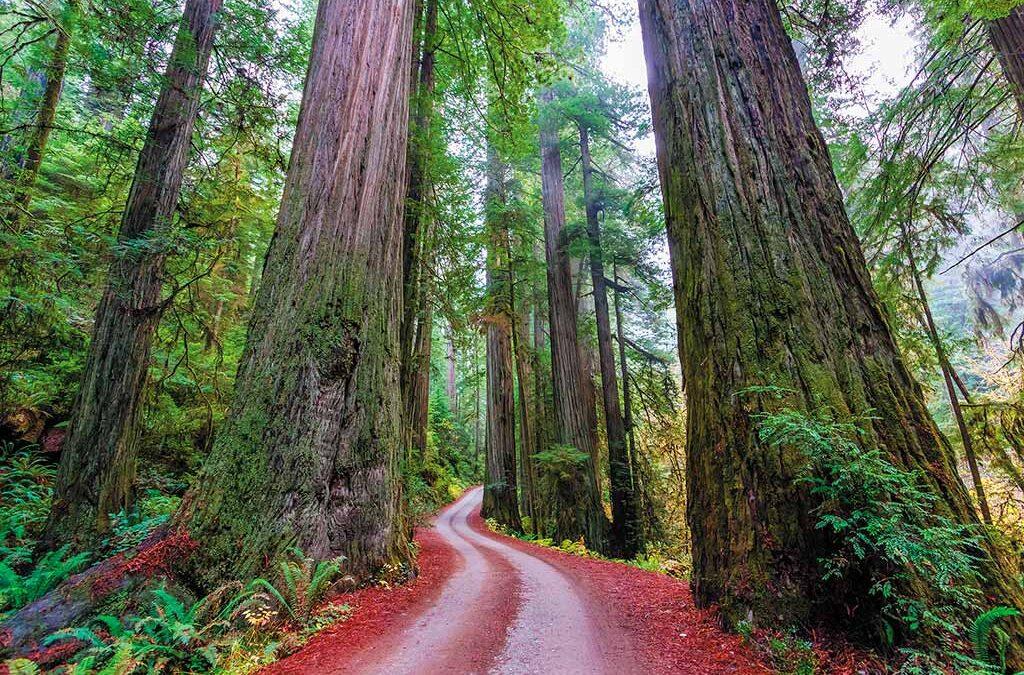California’s ancient redwood forests aren’t just majestic and among the oldest living things on Earth — a new study finds they are a particularly potent weapon against global warming.
The towering trees remove and store more carbon from the atmosphere per acre than any other forests on the planet, including tropical rain forests, researchers found in a discovery that could influence everything from logging rules to how parks are preserved as the state grapples with climate change.
“The story of the carbon is huge,” said Robert Van Pelt, a scientist at Humboldt State University who helped lead the research. “The carbon part of a redwood may be more important than the lumber part in the coming decades.”
Scientists have long known that redwood trees, because they can live more than 1,000 years and grow to immense heights, are able to capture significant amounts of carbon dioxide from the atmosphere. They do it with photosynthesis, the natural process in which plants use energy from sunlight to convert carbon dioxide and water to sugars that help them grow, while also releasing oxygen.
But a team of researchers from Humboldt State and the University of Washington painstakingly set out to measure exactly how much carbon the massive trees, some of which tower more than 300 feet high and were growing during the Roman Empire, are sucking out of the atmosphere.
Starting in 2009, the team, working with researchers from UC Berkeley and Save the Redwoods League, chose 11 forested areas between Jedediah Smith Redwoods State Park near the Oregon border, and UC’s Landels-Hill Big Creek Reserve in Big Sur, about 500 miles away.
Forests in the northern part of Jedediah Smith Redwoods park stored 2,600 metric tons of carbon per hectare, an area of about 2.5 acres, the study found. That’s more than twice the 1,000 metric tons estimated for ancient conifer forests in the Pacific Northwest and the towering eucalyptus forests in Australia and Tasmania.
The story of how researchers did the math is as complex as it is exhausting. In each area studied, they set up a scientific station and documented every tree of more than 2 inches in diameter. They counted and measured every leaf, branch, shrub and log in all 11 plots.
“We finally got the numbers,” said Van Pelt. “No one has ever gotten them before. It took an army of people seven years to get all that. It was very satisfying.”
The researchers didn’t count every leaf by hand. Instead, they drew up 180 formulas for various species of trees and shrubs. They measured the height and diameter of each, plugged in the formula and figured out how many leaves each had. They also hand-counted some trees to verify the accuracy of their methods.
Then they took samples of leaves, bark and wood and placed them in an elemental analyzer at UC Berkeley’s Center for Stable Isotope Biogeochemistry, a machine that can measure in detail what percent of a substance is made up of carbon, nitrogen, phosphorous and other elements. After that, they did the math, and were amazed by the results.
The Jedediah Smith forest also set a world record for most biomass — the combination of all leaves, bark and wood — with 5,190 metric tons per hectare.
There are six species of trees in the world that can grow more than 300 feet tall: redwood, giant sequoia, Douglas fir, Sitka spruce, Australia’s mountain ash and the Tasmanian blue gum.
As climate change continues to warm the Earth, trees are becoming a valuable asset in reducing its impacts, experts say. The 10 hottest years globally since 1880 when modern records began have all occurred since 1998, with 2015 the hottest. Humans burning coal, gasoline and other fossil fuels have sent carbon dioxide concentrations worldwide to the highest in at least 400,000 years, according to NASA, and that carbon traps heat in the atmosphere.
In the future, California could help reduce carbon by preserving more old-growth redwood, even in small patches, by encouraging timber companies to thin younger redwoods from their forests, and perhaps even cutting down non-native trees or trees competing with redwoods for light and water in state parks, said Emily Burns, science director for Save the Redwoods League. A project to do that with Douglas firs planted years ago by a timber company has been underway for several years in Del Norte Redwoods State Park.
Source: DailyDemocrat
By Paul Rogers, Bay Area News Group











